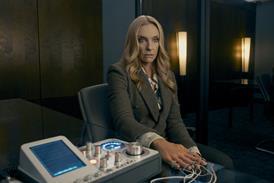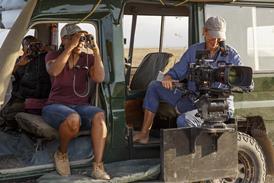Running from mid-December until the end of January, the race follows the route taken by Captain Scott in 1912 and involves temperatures of -50°C and hauling 70kg of supplies. These extreme temperatures and the need to keep the weight of supplies down were the starting point for series producer/director Alexis Giradet's decision to make this his, and Twofour's, first all-digital project.
“Various people suggested that tape would freeze at -40°C but I've shot tape in cold conditions before and had no problems,” he says. “But, besides the impracticality of lugging 300 tapes, we're going to be in the middle of nowhere with no back-up for two months, so we'd be running a big risk if we took tape.”
With the tapeless decision made, Giradet chose P2, selecting Panasonic's AJ-HPX3000, which uses the same lenses and has similar handling to the tape-based HDX-900 with which lead cameraman Keith Schofield was familiar.
On Thin Ice isn't the only series to have made use of tapeless in the Antarctic. Ice Patrol, a 6 x 60-minute HD ob-doc for Five and National Geographic from Spiderlight Films about the deployment of HMS Endurance to the South Pole, is using Sony disc-based technology to combat low temperatures - specifically Sony XDCAM PDW700s and two Sony EX-3s. These will record to solid-state cards, hired from Procam, with a laptop running Media Composer for initial programme edits.
On Thin Ice opted for Panasonic's P2 technology because “although the P2 cards are expensive [around£800] you can reuse them,” explains Giradet.
The HPX3000 will be the master camera but Giradet is also taking the tape-based HDX-900, a Sony HVR-Z7 which captures HDV to compact Flash cards, a small Sony A1E HDV tape camcorder and a pair of Panasonic HDC-SD9 “diary cams” which record to SDHC cards.
The aim is to film in three-day blocks on 20 P2 cards (16 and 32GBs) before transferring footage onto rugged Lacie hard drives using P2 Gear.
With limited satellite coverage in the region, the team's insurance against equipment failure are spares: a second laptop, dual P2 Gears and another five-slot P2 card reader. They will also take card readers for the HVR-Z7 and SD9.
Post will be managed on return at Twofour. “We'll treat the hard drives as traditional rushes which we'll import into Avid Unity Isis for editing,” explains head of post Rick Horne, adding: “With long-form projects like this, being digital doesn't save that much time. We've so much material it's impossible to connect 40 hard drives to a computer but as we get used to the process and as storage capacity increases it will become quicker.”
Broadcast's next Digital Workflows conference, covering many of the issues raised in this article, takes place on 26 and 27 March 2009. To register for more information on the event email joanna.pocock@emap.com

























No comments yet